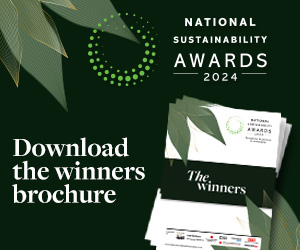Ørsted and BP have signed a letter of intent to work together to develop a project for industrial-scale production of green hydrogen.
In their proposed Lingen Green Hydrogen project, the two firms intend to build an initial 50 megawatt (MW) electrolyser and associated infrastructure in Germany at a BP refinery. This will be powered by renewable energy generated by an Ørsted offshore wind farm in the North Sea and the hydrogen produced will be used in the refinery. The companies anticipate the project could be operational by 2024.
The 50 MW electrolyser project is expected to produce one tonne an hour of green hydrogen or almost 9,000 tonnes a year. This would be sufficient to replace around 20 per cent of the refinery’s current ‘grey’ hydrogen consumption, avoiding around 80,000 tonnes of CO2 equivalent emissions a year.
Green hydrogen, made by the electrolysis of water using renewable power, ‘grey’ hydrogen is more common and produced by reforming natural gas, which does result in CO2 emissions.
Martin Neubert, executive vice president and CEO of offshore wind for Ørsted, noted: “Heavy industries such as refineries use large quantities of hydrogen in their manufacturing processes. They will continue to need hydrogen but replacing the current fossil-based hydrogen with hydrogen produced from renewable energy can help these industries dramatically lower their CO2 footprint. But first, renewable hydrogen has to become cost competitive with fossil-based hydrogen, and for that we need projects such as this with BP’s Lingen refinery which will demonstrate the electrolyser technology at large scale and showcase real-life application of hydrogen based on offshore wind.”
In addition to green hydrogen production, bp and Ørsted intend to focus on maximising the efficiency of the project’s electrolysis system, including assessing sustainable uses for the main by-products of the process, primarily oxygen and low-grade excess heat. The project is also intended to support a longer-term ambition to build more than 500MW of renewable-powered electrolysis capacity at Lingen. This could provide green hydrogen to both meet all the refinery’s hydrogen demand and provide feedstock for potential future synthetic fuel production.
Latest News
-
Corporate backed small charities campaign raises £1.8m
-
Charities recieve AI skills training from Neighbourly, Microsoft and Onside partnership
-
Crisps firm launches fundraiser for Air Ambulances UK
-
Football club partners with traumatic bereavement charity
-
UK firms on course for ‘disorderly’ green transition
-
Clinical trials recruitment firm names hospice as charity partner
© 2019 Perspective Publishing Privacy & Cookies









Recent Stories